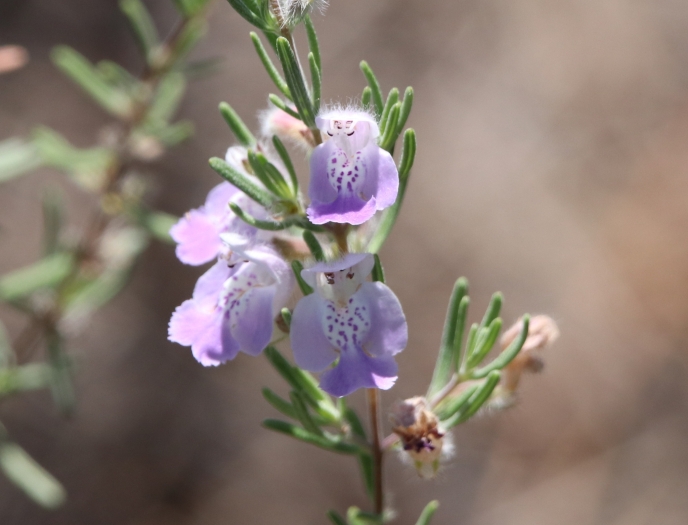False Rosemary
(Conradina canescens)
False Rosemary (Conradina canescens)
/
/

Lauren McLaurin
CC BY 4.0
Image By:
Lauren McLaurin
Recorded By:
Copyright:
CC BY 4.0
Copyright Notice:
Photo by: Lauren McLaurin | License Type: CC BY 4.0 | License URL: http://creativecommons.org/licenses/by/4.0/ | Rights Holder: Lauren McLaurin | Publisher: iNaturalist | Date Created: 2019-05-15T13:55:12-07:00 |


















































Estimated Native Range
Summary
Conradina canescens, commonly known as False Rosemary, is an evergreen shrub native to the coastal plain scrub, sandhills, and pine flatwoods of the Gulf states of the United States, particularly in Florida and Alabama. It typically grows to a height of 3-4 feet (0.9-1.2 meters) and a width of 1-3 feet (0.3-0.9 meters). False Rosemary has a compact, mounded form with needle-like, aromatic leaves that resemble those of culinary rosemary. Its flowers are tubular and appear in shades of blue, purple, and white, blooming profusely in the spring, with sporadic flowering continuing through summer and fall. The flowers are attractive to bees and butterflies, adding to the plant’s ornamental value.
False Rosemary is valued for its drought tolerance, making it an excellent choice for xeriscaping and water-wise gardens. It is also used as a ground cover, in rock gardens, and for naturalistic plantings. This plant thrives in full sun and requires well-drained, sandy soil, often found in its native habitat. It is generally low-maintenance, but it can be susceptible to root rot if overwatered or planted in poorly drained soils. False Rosemary is not known for aggressive roots or significant disease problems, making it a reliable and easy-to-care-for addition to the landscape.CC BY-SA 4.0
False Rosemary is valued for its drought tolerance, making it an excellent choice for xeriscaping and water-wise gardens. It is also used as a ground cover, in rock gardens, and for naturalistic plantings. This plant thrives in full sun and requires well-drained, sandy soil, often found in its native habitat. It is generally low-maintenance, but it can be susceptible to root rot if overwatered or planted in poorly drained soils. False Rosemary is not known for aggressive roots or significant disease problems, making it a reliable and easy-to-care-for addition to the landscape.CC BY-SA 4.0
Plant Description
- Plant Type: Shrub
- Height: 3-2 feet
- Width: 1-3 feet
- Growth Rate: Moderate
- Flower Color: Purple, White
- Flowering Season: Spring, Summer, Fall
- Leaf Retention: Evergreen
Growth Requirements
- Sun: Full Sun
- Water: Low
- Drainage: Fast
Common Uses
Bee Garden, Border Plant, Drought Tolerant, Fragrant, Groundcover, Low Maintenance, Potted Plant, Rock Garden, Salt Tolerant, Showy Flowers
Natural Habitat
native to the coastal plain scrub, sandhills, and pine flatwoods of the Gulf states of the United States, particularly in Florida and Alabama
Other Names
Common Names:
Scientific Names: , Conradina canescens, Conradina brevifolia, Conradina puberula, Calamintha canescens,
GBIF Accepted Name: Conradina canescens A.Gray